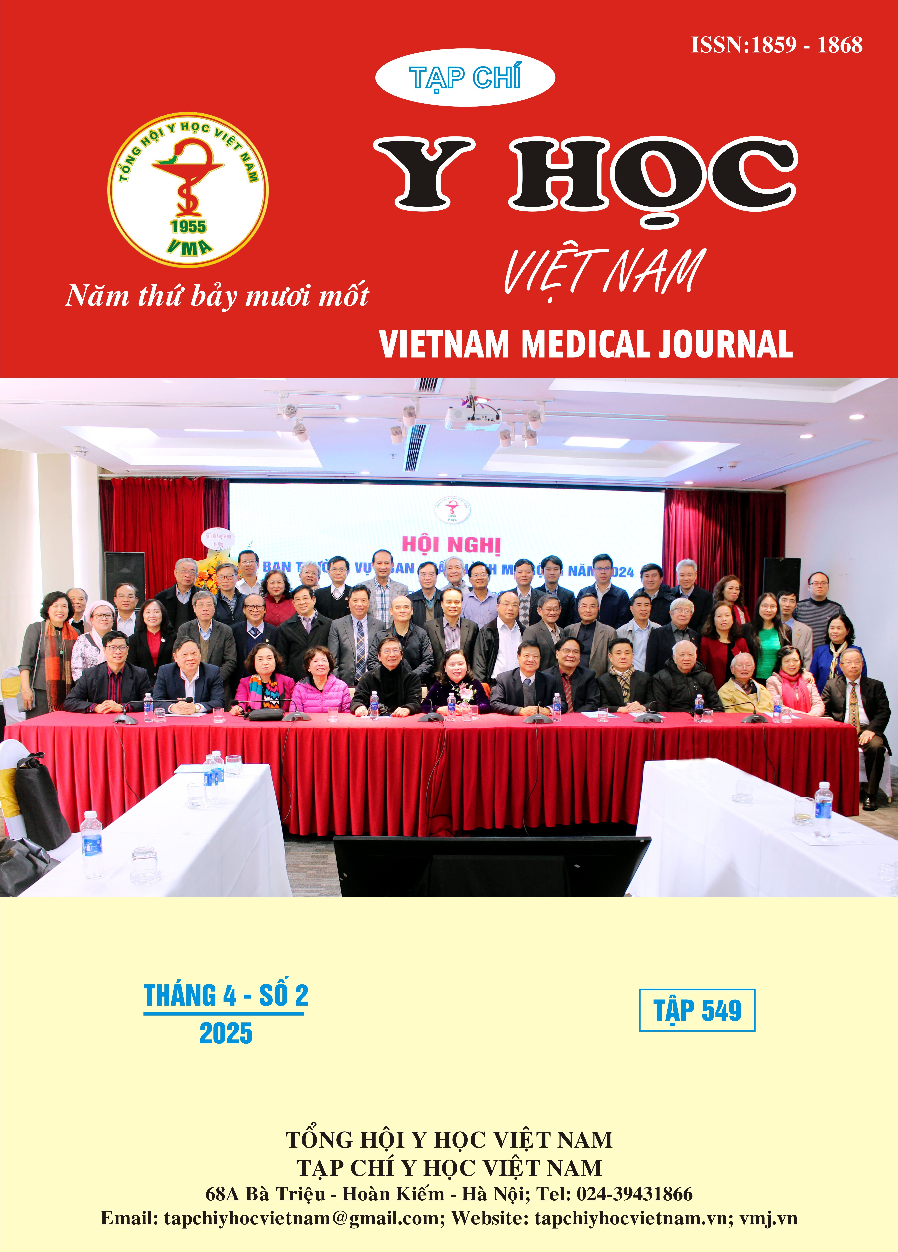EPIDEMIOLOGICAL AND CLINICAL CHARACTERISTICS AND QUALITY OF LIFE IN PATIENTS WITH SCALP PSORIASIS
Main Article Content
Abstract
Objectives: To investigate the epidemiological and clinical characteristics and quality of life in patients with scalp psoriasis. Subjects and Methods: A descriptive case series study was conducted on 96 patients with scalp psoriasis at Ho Chi Minh City Dermatology Hospital and Nguyen Tri Phuong Hospital from September 2024 to January 2025. Results: The most common initial site of onset was the scalp, accounting for 46.9%, with the two predominant clinical forms being plaque-type and fine scaling-type. Nail involvement was observed in 75% of patients with scalp psoriasis. Topical treatment was the most common therapeutic approach (76%), with the most frequently used regimen being corticosteroids combined with vitamin D analogs (66.7%). Quality of life impairment, as assessed by the Scalpdex score, was higher among females, outdoor workers, individuals residing outside Ho Chi Minh City, patients with cone-shaped scalp psoriasis, and those with lesions in difficult-to-treat areas. Patients receiving biologic therapy had a better quality of life. Disease severity, as measured by BSA, PASI, and PSSI, showed a positive correlation with quality of life impairment based on Scalpdex. Conclusion: The scalp is the most common initial site of onset in patients with psoriasis, significantly impacting quality of life in correlation with disease severity. Factors associated with quality of life impairment include female gender, occupation, place of residence, clinical type of scalp psoriasis, lesion location, and treatment modality.
Article Details
Keywords
scalp psoriasis, quality of life, Scalpdex
References
2. Merola JF, Qureshi A, Husni ME. Underdiagnosed and undertreated psoriasis: Nuances of treating psoriasis affecting the scalp, face, intertriginous areas, genitals, hands, feet, and nails. Dermatol Ther. May 2018;31(3): e12589. doi:10.1111/dth.12589
3. Chen SC, Yeung J, Chren MM. Scalpdex: a quality-of-life instrument for scalp dermatitis. Arch Dermatol. 2002;138(6): 803-807. doi:10.1001/ archderm.138.6.803
4. Lin TY, See LC, Shen YM, Liang CY, Chang HN, Lin YK. Quality of life in patients with psoriasis in northern Taiwan. Chang Gung Med J. 2011;34(2):186-196.
5. Bruni F, Alessandrini A, Starace M, Orlando G, Piraccini BM. Clinical and trichoscopic features in various forms of scalp psoriasis. J Eur Acad Dermatol Venereol. 2021;35(9):1830-1837. doi:10.1111/jdv.17354.
6. Aldredge, L.M., & Higham, R.C. Manifestations and Management of Difficult-to-Treat Psoriasis. Journal of the Dermatology Nurses’ Association. 2018;10:189–197.
7. Callis Duffin K, Mason MA, Gordon K, et al. Characterization of Patients with Psoriasis in Challenging-to-Treat Body Areas in the Corrona Psoriasis Registry. Dermatology. 2021;237(1):46-55. doi:10.1159/000504841.
8. Ali FM, Cueva AC, Vyas J, et al. A systematic review of the use of quality-of-life instruments in randomized controlled trials for psoriasis. Br J Dermatol. 2017;176(3):577-593. doi:10.1111/bjd. 14788.
9. Otlewska-Szpotowicz A, Matusiak Ł, Salomon J, Reich A, Szepietowski JC. SCALPDEX Questionnaire: creation and validation of the Polish language version. Postepy Dermatol Alergol. 2024;41(6):590-593. doi:10.5114/ada. 2024.142595.
10. Zampieron A, Buja A, Fusco M, et al. Quality of life in patients with scalp psoriasis. G Ital Dermatol Venereol. 2015;150(3):309-316.


